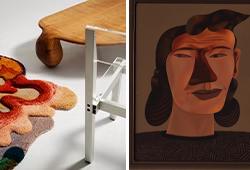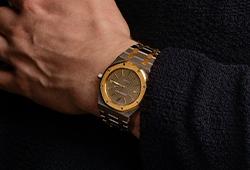Svante Schöblom, chairs, 6 pcs, "Snille", 1970s.
Seat shell made of polypropylene with the addition of UV stabiliser, antioxidants, and antistatic agents. Chrome-plated metal base. Seat height approx. 46 cm.
Vähäistä kulumaa. Jälkiä. Naarmuja.
Kirjallisuus
In 1972, IKEA incorporated the 75 cm high chair Snille (item number 48880) into its product catalogue. The model, which weighed five kilos, was available with a shell in orange, white, or brown. The design was by Svante Schöblom, and it was manufactured by Overman AB in Tranås. Snille was also one of the 18 models that Maj-Britt Ericsson highlighted in the article "Höstnya möbler," published in Villa & Hem's ninth issue in 1972.
In Overman AB's printed materials, the model was referred to as Clipper. The factory went on to produce many thousands of Clipper shells during the 1970s, which could be paired with a variety of different bases. Clipper was seen throughout this decade in public spaces of various kinds across Sweden. Among other places, the shells were used in the ice rink Scandinavium in Gothenburg and for a few years also in the auction hall at Bukowski Auktioner AB.
These successes were partly the foundation for the follow-up Scoop, which is now much rarer on the second-hand market. In the early 1980s, IKEA launched a similar model, designed by Niels Gammelgaard, which was marketed under the name Järvi. 25 years later, the designer recounts: "Järvi was indeed a response to Snille, which Svante Schöblom had made for Overman. IKEA wanted its own plastic shell chair with four legs, so we were not dependent on the manufacturer Overman."
Despite the similar appearance, or perhaps because of it, Järvi did not become nearly as popular as Snille. As early as the mid-1960s, Perssonverken in Bjärnum AB marketed a tubular steel chair with a plastic shell (polypropylene in this case) with holes in the backrest. The model was called London (with "requisition number" 1000) and was designed by Philippus Potter.
/.../
In issue 32 of Femina in 1974, Jill Dufva presented four study places for school children and youth. For one of these, she had chosen Svante Schöblom's swivel chair Snurra.
Source: Siesing, Andreas: Svenska 70-talsmöbler: I plast, stål, furu och manchester 1969-1980, Lindelöws förlag, pp. 262, 263. Models illustrated on page 262.




















































